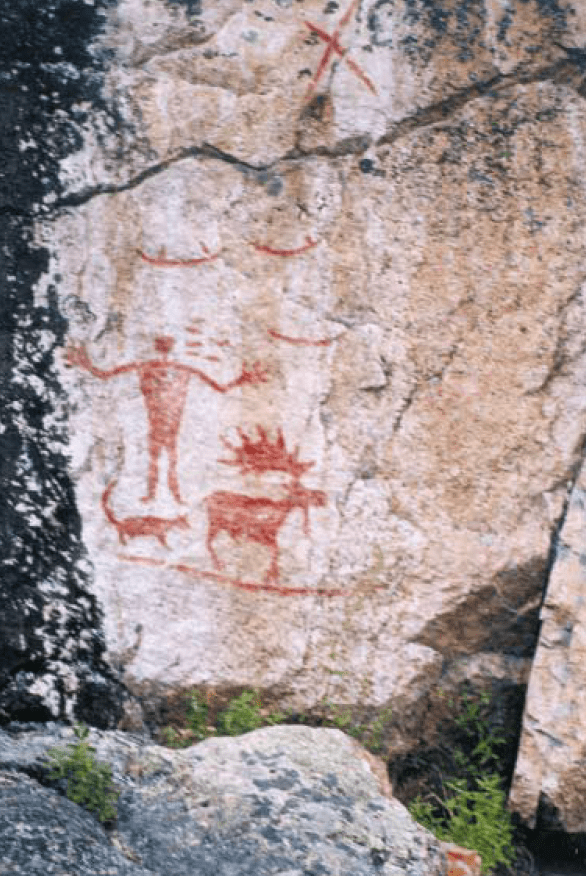
These historic native illustrations are thought to be some of the clearest examples of pictographs in the BWCA/Quetico wilderness.
The figures include a bull moose, another four legged animal, several canoes and a maymayguayshi spirit-man; a series of horizontal lines joined with a painted cross to tower above the other figures.
People have occupied this area for nearly 9,000 years. These particular pictographs are believed to be 500-1,000 years old. Their symbols give us clues to the traditions, legends, and values of the Ojibway people; their paintings confirm their close tie to their natural surroundings and their animal “brothers”.
Indigenous people created the red ochre paint by mixing iron hematite with boiled sturgeon spine and bear grease to depict their stories on the stone canvas. Some of these images are thought to be influenced by vision quests which show important spiritual insights. Perhaps they were painted by Midewewin priests of shamans, those connected to Ojibway religious beliefs. On the other hand, they might tell stories about historical events or point directions like symbols on a map.
Several researchers have offered theories behind the Native American artwork. Michael Furtman in his book Magic on the Rocks compares the moose on Hegman to the paintings on Darky Lake in Quetico and suggests that they might have been painted by the same artist. The author also sees the panel as relating to the Ojibway story-legend of Nanabush, the four legged animal representing a wolf which is hunting the moose. Carl Gawboy, professor at the College of St. Scholastica in Duluth, offers another suggestion about the Hegman pictographs. The professor of Native American studies links them to the constellations and compares the image of the ‘spirit man’ to the star grouping in Orion. The Ojibway might see him as “Wintermaker” as he appears in the eastern sky during the coming of cold weather. The seven short horizontal lines just above the larger figure might represent Pleiades while the moose could be Pegasus and the four legged animal may well denote Leo the lion. He completes the correlation by comparing the canoes to the Milky Way of the “River of Souls” in the Ojibway tradition. Gawboy surmises that the cross could represent the star Capella.
All of these constellations are normally observed in the winter sky, a time when the rock wall would have been more accessible to the artist from the ice-covered lake surface. Native American people celebrated the winter season as a time for hunting and storytelling.

